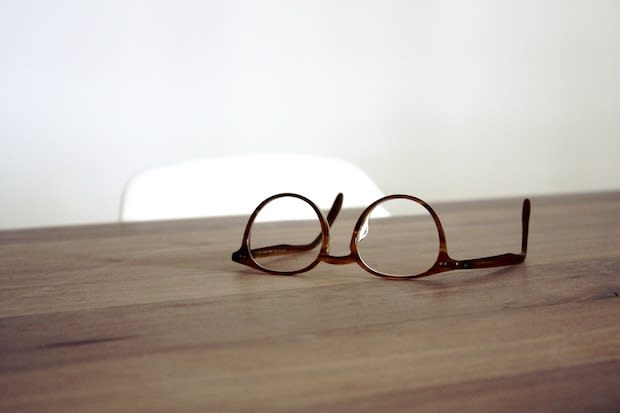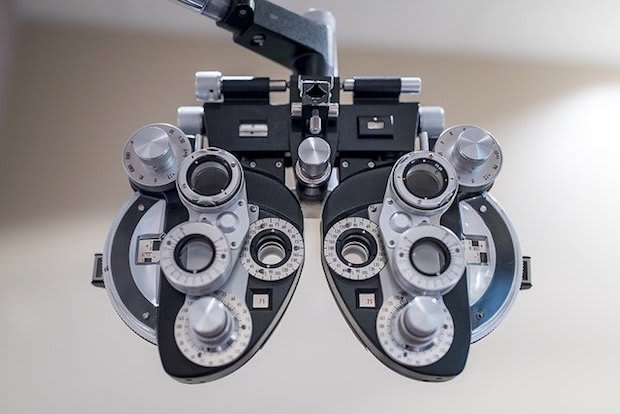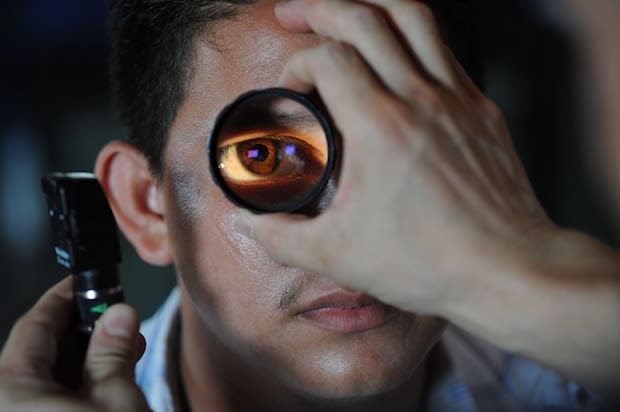Table of Contents
a. What are Refractive Errors?
b. How are Refractive Errors Treated?
b. How is Conjunctivitis Treated?
Overview
In the United States, more than 12 million adults over the age of 40 have a vision impairment, and over 90 million adults are at high risk for serious vision loss. [1]
The eye is a very complicated area of the body. There are many different components that make up the eye and problems arise when one of these components experiences a problem. Our vision occurs when light enters our eyes. The cornea is the dome-shaped outer layer of the eye and this helps our eyes to focus. The amount of light that enters the pupil is controlled by the iris, the colored part of our eye. Once the light has entered, it hits the retina at the back of the eye, where special cells turn light into electrical signals. These signals pass to the brain, where we process the signals into the images that we see. [2]
There are many different disorders and diseases that can affect your eyes and vision. Keep reading to learn about the most common disorders, including the symptoms, causes, and treatments.
Refractive errors include a range of conditions. Combined, refractive errors are the most common eye problem in the United States. [3]
Refractive Errors
a. What are Refractive Errors?
Get savings updates for Zaditor
The four most common refractive errors are:
Nearsightedness: This problem is also known as myopia. People who are near-sighted have clear vision close to them, but objects appear blurry in the distance.
Farsightedness: This eye disorder is also known as hyperopia. People that are far-sighted have clear distance vision but objects that are close to them appear blurry.
Presbyopia: This condition occurs after the age of 40 as your eye’s lens becomes more rigid. This makes close-range reading more difficult. Presbyopia may combine with other forms of refractive errors.
Astigmatism: Astigmatism results in vision becoming distorted and blurry at all distances.
Refractive errors happen when your eye doesn’t bend light correctly, resulting in your vision being blurred. This occurs as a result of the shape of the eye and is not, as commonly thought, a result of overuse or straining of the eyes. [4]
b. How are Refractive Errors Treated?
Refractive disorders are usually treated with corrective lenses, either eyeglasses or contact lenses. Some refractive errors can be corrected using refractive or laser surgery. If there are no other disorders, then presbyopia may be treated using over-the-counter reading glasses.
Glaucoma
a. What is Glaucoma?
Glaucoma is a condition that occurs when the optic nerve is damaged due to increased pressure in the eye. Glaucoma can affect people of any age but is more common in older adults. In adults over 60, glaucoma is a leading cause of blindness. [5]
Often, glaucoma is caused by having very high pressure in the eye. This pressure typically occurs gradually. Pressure can build in the eye when the channel that helps fluid flow into the eye becomes blocked. [6]

b. How is Glaucoma Treated?
Vision lost due to glaucoma cannot be recovered. However, once glaucoma has been diagnosed, reducing eye pressure can help maintain your remaining eyesight. Glaucoma is often treated using eyedrops that can improve fluid drainage and reduce eye pressure. Common eye drops to treat glaucoma include Azopt (brinzolamide) and Alphagan P (brimonidine).
Conjunctivitis
a. What is Conjunctivitis?
Conjunctivitis (also known as pink eye) is an infection or inflammation that affects the membrane of the eyelid and the white part of the eye. This condition is very contagious and is easily passed on to others. Common symptoms of conjunctivitis include pink or red eyes, watery discharge in the eyes, increased amount of tears, or an itchy or gritty feeling in the eye. [7]
Pink eye is commonly caused by viruses or bacterial infections. However, the condition can also occur when allergens or chemicals cause inflammation in the eye.
b. How is Conjunctivitis Treated?
The treatment for conjunctivitis depends on the cause of the condition. For bacterial infections, the most effective treatment is with antibiotics. Eye drops such as Zaditor (ketotifen) and Patanol (olopatadine) are typically prescribed for allergic conjunctivitis. Unfortunately, for viral conjunctivitis, there is no effective treatment. [8]
Cataracts
a. What are Cataracts?
A cataract is a cloudy area in the lens of your eye. The lens is a normally clear layer of the eye that helps focus light. When cloudy areas occur, this can affect your vision. Cataracts are very common as people get older. In the United States, around one in six adults over 40 have cataracts and more than half of people over 80 have cataracts or have had cataract surgery. [9]
Cataracts normally develop slowly and can occur in either eye. As well as blurry vision, cataracts may also cause faded colors, double vision, reduced night vision, and additional glare in lights. [10]
b. How are Cataracts Treated?
The most effective cataracts treatment is surgery. This is normally suggested when cataracts begin to affect your daily life, like reading or driving. The surgery involves replacing the clouded lens with a clear, artificial lens. If you require surgery in both eyes, then they will typically be done at separate times. Following surgery, eye drops such as Maxidex (dexamethasone) may also be prescribed to avoid infections and help the healing process. [11]
Age-related macular degeneration (also known as AMD or AMRD) is an eye disease that causes your central vision to become blurred. AMD only affects your central vision and does not affect side vision. However, it can make tasks such as reading, driving, and recognizing faces very difficult. [12] The macular is a small area at the back of the eye that lets you see small details that you are focusing on. AMD occurs when this area is damaged or wears down. There are two different types of age-related macular degeneration: dry AMD and wet AMD. Dry AMD is far more common, however wet AMD is more severe when it occurs. As the name suggests, this condition is more common as you get older and is the leading cause of severe blindness for adults over 60. [13] There is no cure for age-related macular degeneration, although there are treatment options that may slow the disease and prevent severe vision loss. There are several lifestyle changes that may help, including regular exercise, healthy eating, and quitting smoking. [14] For wet AMD, treatment can involve regular injections into the affected eye. Dry AMD may be treated using surgery or rehabilitation to teach you to use your side vision. The content in this article is intended for informational purposes only. This website does not provide medical advice. In all circumstances, you should always seek the advice of your physician and/or other qualified health professionals(s) for drug, medical condition, or treatment advice. The content provided on this website is not a substitute for professional medical advice, diagnosis, or treatment.
AMD
a. What is AMD?
b. How is AMD Treated?
